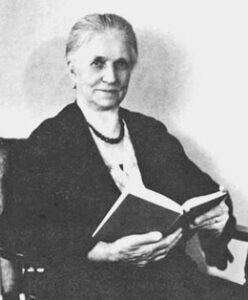
This is another entry in my “maybe a movie” series. It is a fabulous and true story and worthy of the big screen. The book that introduced me to an incredible woman’s journey is Bold Spirit: Helga Estby’s Forgotten Walk Across Victorian America, by Linda Lawrence Hunt. She told a family tale that ocurred 124 years ago in such a way that you will wonder why this story isn’t more widely known.
The back story: Helga was an immigrant from Norway. She married Ole Estby, another immigrant from Norway, lived in a sod home in Michigan and had 9 children. The lists of hardships endured in isolation with a man who only spoke Norwegian was just beginning with the devastation nature wrought. Life was hard and as a woman she was clear about what her role should be. No real choices. Housekeeping including shooing snakes that came upthrough the floor. Having and nursing babies; having lost her first born at birth. Living in a time when disease and contagion took the lives of many children.
A move to Spokane, Washington seemed like the clouds were lifting. Helga was no longer isolated and the new town even had a library. Sadly, the trials continued and with the combination of her husband’s injuries from an accidents and the financial Panic of 1893, the family could not pay the mortgage or taxes on their home and farmland.

Together with Clara, her 17-year-old daughter, Helga, now 36, tried to save her family farm by walking 3,500 miles across country to New York City in an effort to win a $10,000 prize. Clara and Helga started set out on foot from Eastern Washington May 5.The walk lasted seven months and through 14 states armed with little more than a compass, red-pepper spray, a revolver, and Clara’s curling iron, but they were not allowed to carry more than five dollars each. As they visited Indian reservations, Western boomtowns, remote ranches and local civic leaders, they confronted snowstorms, hunger, thieves and mountain lions with equal aplomb.The women walked 25-35 miles a day and were offered shelter along the way, spending only 9 nights without a roof over their head. They wore out 32 pairs of shoes and had one encounter that required using the Smitth and Wesson. On Christmas Eve, 1896, the New York World reported their arrival in New York City. After walking 3,500 miles, on arrival in New York, the (still unknown to this day) sponsor of the contest refused to pay or help them back home, saying the women had missed their deadline.
Helga managed to return to her farm only to find that two of her children had died of diphtheria in her absence.
Helga Esyby is remembered as a suffragist. She was a woman who endured suffering in ways I cannot imagine, but her life stands as a model of determination, courage and independence.
